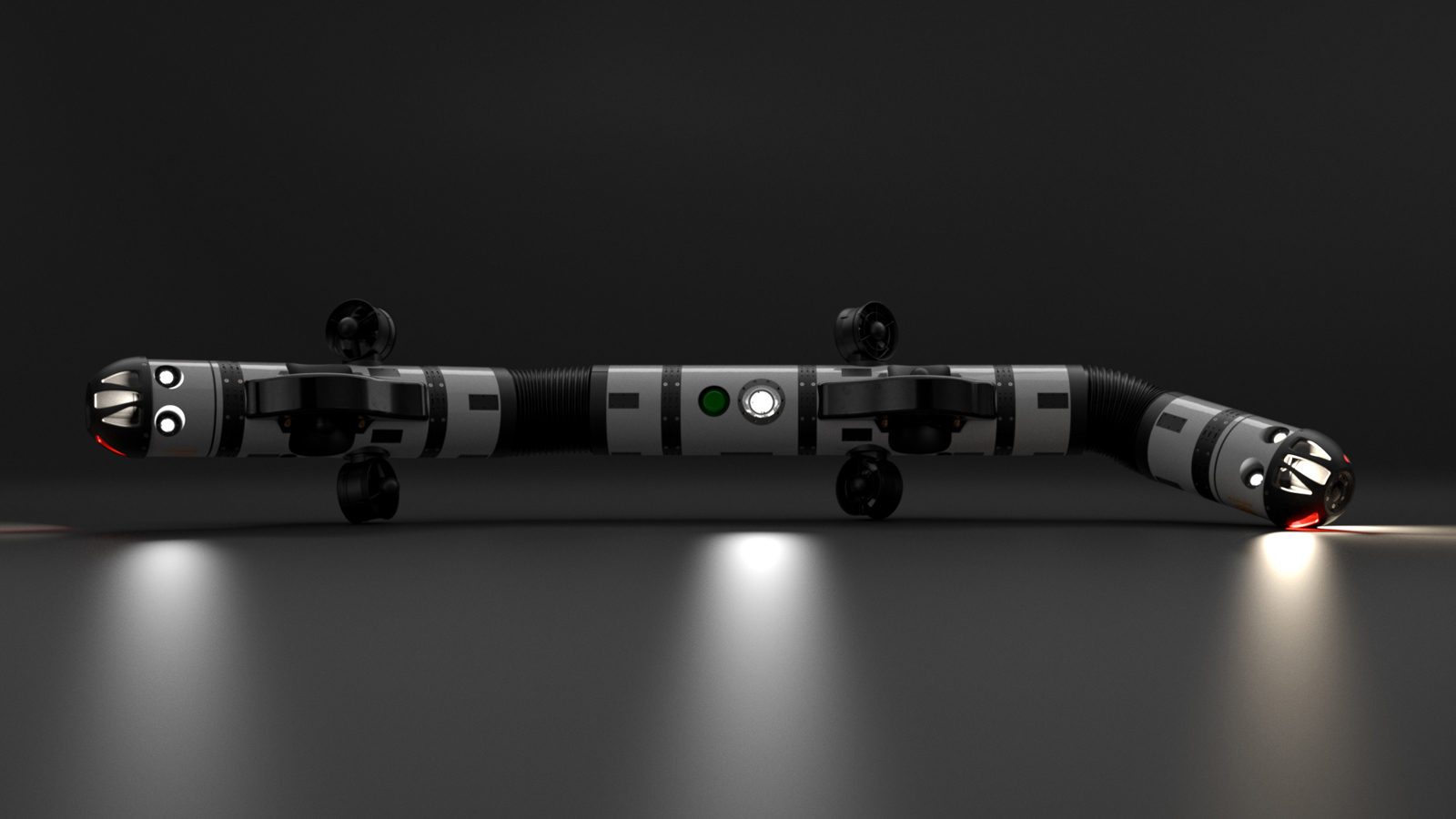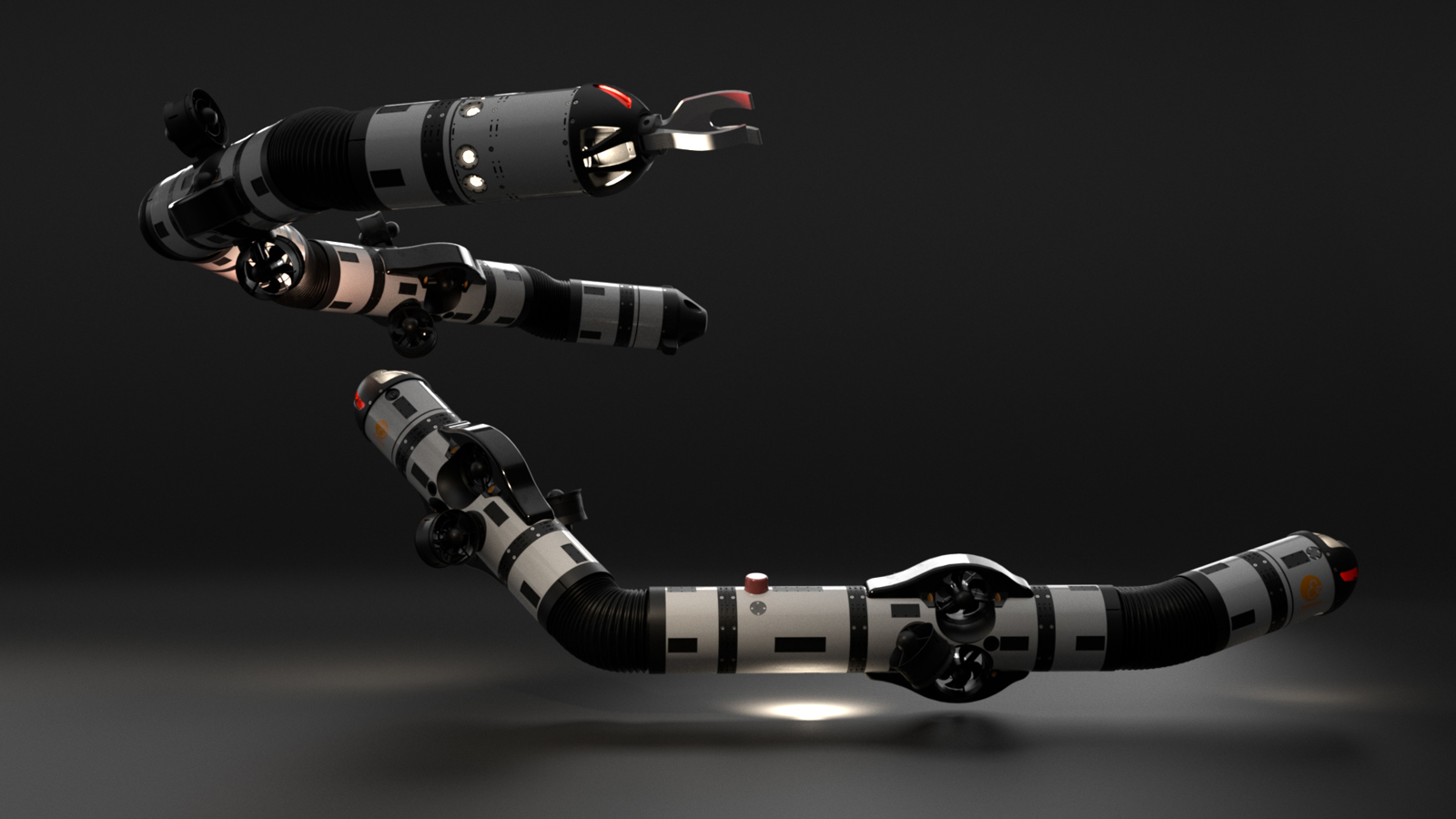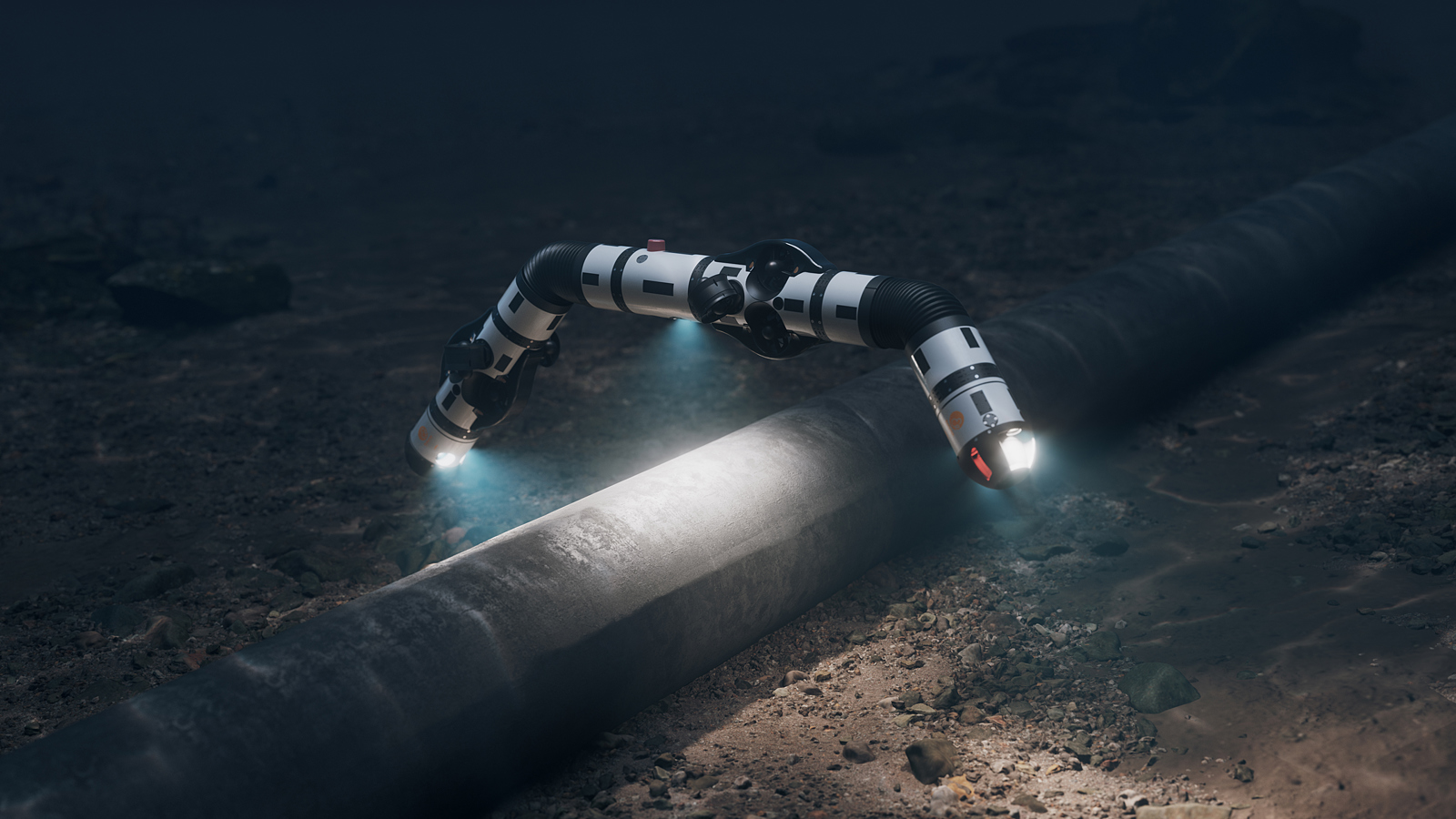
SNAKE ROBOTS PROVIDE A SUSTAINABLE SOLUTION TO SEABED ASSETS
KONGSBERG, in partnership with Equinor, is pioneering an exciting new technology that has the potential to make great advances in the sustainability of the oil and gas industry
-
Text:Marketing & Communication Department
Photo:@ Equinor
-
Gunvor Hatling MidtbøVice President, Communications
Little did Pål Liljebäck realise in 2003 that the PhD he was embarking on to research ‘snake robotics’ would result in a new technology with the potential to revolutionise the subsea oil and gas industry and make a substantial contribution to the sustainability of the sector.

CTO, Eelume
Pål’s original research at Norwegian University of Science and Technology (NTNU) was focused on biomimetics: looking at how robots could mimic animal movement. He was initially looking to develop a land-based ‘fire-fighting’ snake robot that would incorporate a water hose to tackle fires, but when he and his research group looked at how it would operate in water he had his ‘eureka’ moment. With the addition of electric water thrusters along its long articulated modular body, he could see a whole host of industrial applications for this new technology.
Today he is Chief Technology Officer of Eelume, the company that was spun out of his research at NTNU, which is now developing and testing a modular autonomous snake robot concept for the inspection, maintenance and intervention of subsea oil and gas assets, in partnership with KONGSBERG and the Norwegian national oil and gas company Equinor.
Eelume robot
The Eelume robot is designed to stay permanently on the seabed and to travel distances to carry out tasks that would normally require an ROV to be sent out from a surface vessel deployed to the oil field; being resident on the seabed, the Eelume concept will save the operator time and expense, minimising risk to personnel and resulting in a significant reduction in carbon emissions.
Pål says the Eelume name was chosen because of the vehicle’s eel-like elongated and slender body, but it’s also a play on the word ‘illuminate’ because of its inspection role on the seabed, shining a light on the condition of undersea assets.
Describing the robot, he says: “It's basically a sensor and tool carrier, but its greatest strength is its modularity, which means you can plug all kinds of thrusters, batteries, lights, sensors and tool modules together along its length to meet whatever role you need it to play underwater. I like to refer to it as ‘snake Lego’.
“Up until recently, the vehicle has been remotely controlled and the main payload has been a series of cameras along the length of the robot, but now we're developing an autonomous version so the robot can operate on its own.”
Pål adds: “What makes the Eelume concept so unique is its slender articulated body, which is much more flexible than traditional larger rigid ROVs and enables it to carry out operations in confined spaces not accessible by conventional subsea robots.”
The Eelume team has recently made its first sale of a six-metre special version of the robot to NTNU for its robotic research unit. However, the big test of the technology will come in autumn 2021 when two Eelume vehicles will take part in trials 330 metres below the surface of the North Sea at Equinor’s Åsgard field.
Before it starts its demonstration trials at the field, the Eelume robot will undertake extensive testing at the Trondheim Fjord early next year. Morton Bjerkholt, Chief Executive of Eelume said they will be running tests in the fjord to show that the vehicle can operate autonomously as well as dock and charge from the docking platform that Equinor has developed. Here it will undergo autonomous subsea inspection trials and demonstrate its light intervention capabilities, such as turning valves on the test docking platform with its torque tool, all monitored from the company’s offices in Trondheim.
Pål Atle Solheimsnes, Equinor’s Leading Advisor Subsea Intervention & Diving, explains why the company took this collaborative approach to the project: “We decided to take the lead with the development of an internationally agreed docking station because the use of resident autonomous drones to look after subsea assets has such great potential for our industry. The only way to get this done quickly and effectively is through collaboration; working together on one agreed standard for a docking station rather than everyone inventing their own systems. We’ve been very open with our ideas and this has paid off, as all the stakeholders want the rapid implementation of this technology.”
When asked about the potential to enhance sustainability within the company, Pål says that the benefits of this project supported all of Equinor’s strategic goals: “always safe, high value, low carbon”.
He says: “Having a full-time inspection, maintenance and intervention capability on the seabed means that we don’t have to put people at risk by deploying a vessel to get out to our field, particularly in bad weather. It also helps to reduce our costs and increases our production efficiency, which ticks our ‘high value’ box, and not having to get a ship out of dock at short notice cuts our carbon emissions as deploying a surface vessel to one of our fields can release the same CO2 emissions as 50,000 cars on the road.
“There are also other benefits of having resident onsite drones at our fields as it means that we can also deploy them with sensors to carry out other surveys to help us understand and protect the environment we are working in, that would otherwise be very costly to implement.”
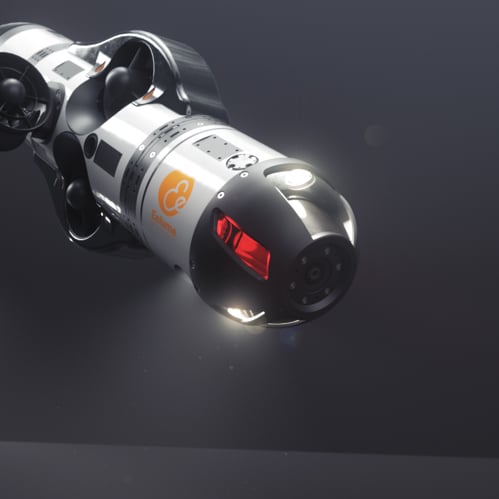
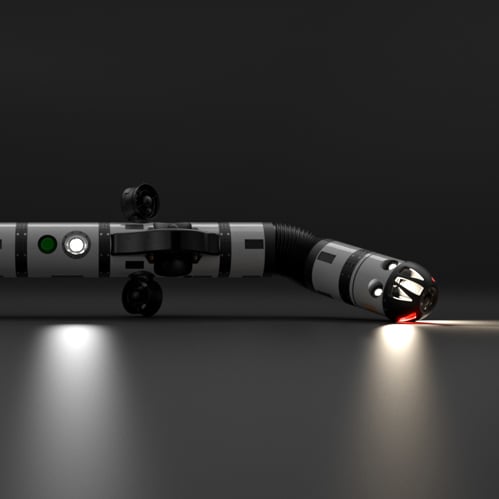
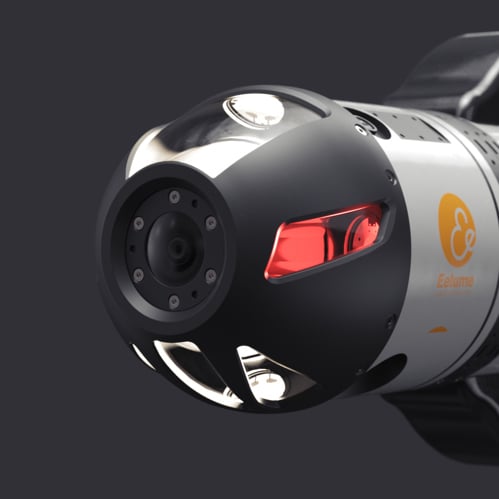
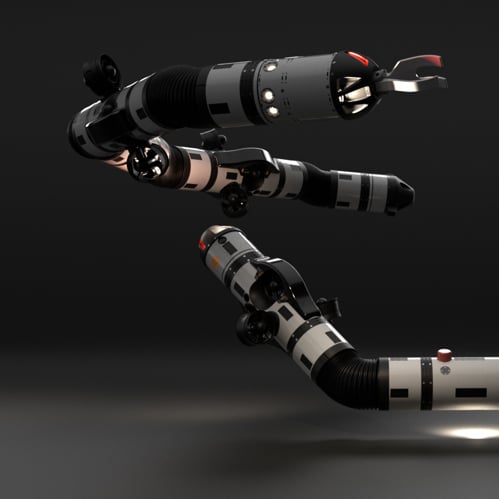
Kongsberg’s Richard Mills, Vice President Marine Robotics Sales, is also excited about the potential of the Eelume concept and can see opportunities in other applications from checking the structures and moorings of offshore wind farms and fish farms to inspecting water reservoirs and even the conditions inside nuclear power stations.
He says: “The really unique capability of this technology is the fact that it can change and hold its shape and move in many different ways and being so small, it's only 20 centimetres in diameter, it can access places that nothing else can.
“We got involved in the technology because of its application as a resident subsea inspection and emergency intervention tool in the oil and gas sector, particularly in remote and hard to reach places that would take days to reach by surface vessel. With its torque tool it can shut or open a valve in the case of an emergency shutdown. Let's face it, if it's preventing a leak, then that's priceless, not only for the operator but also for protecting the environment.”
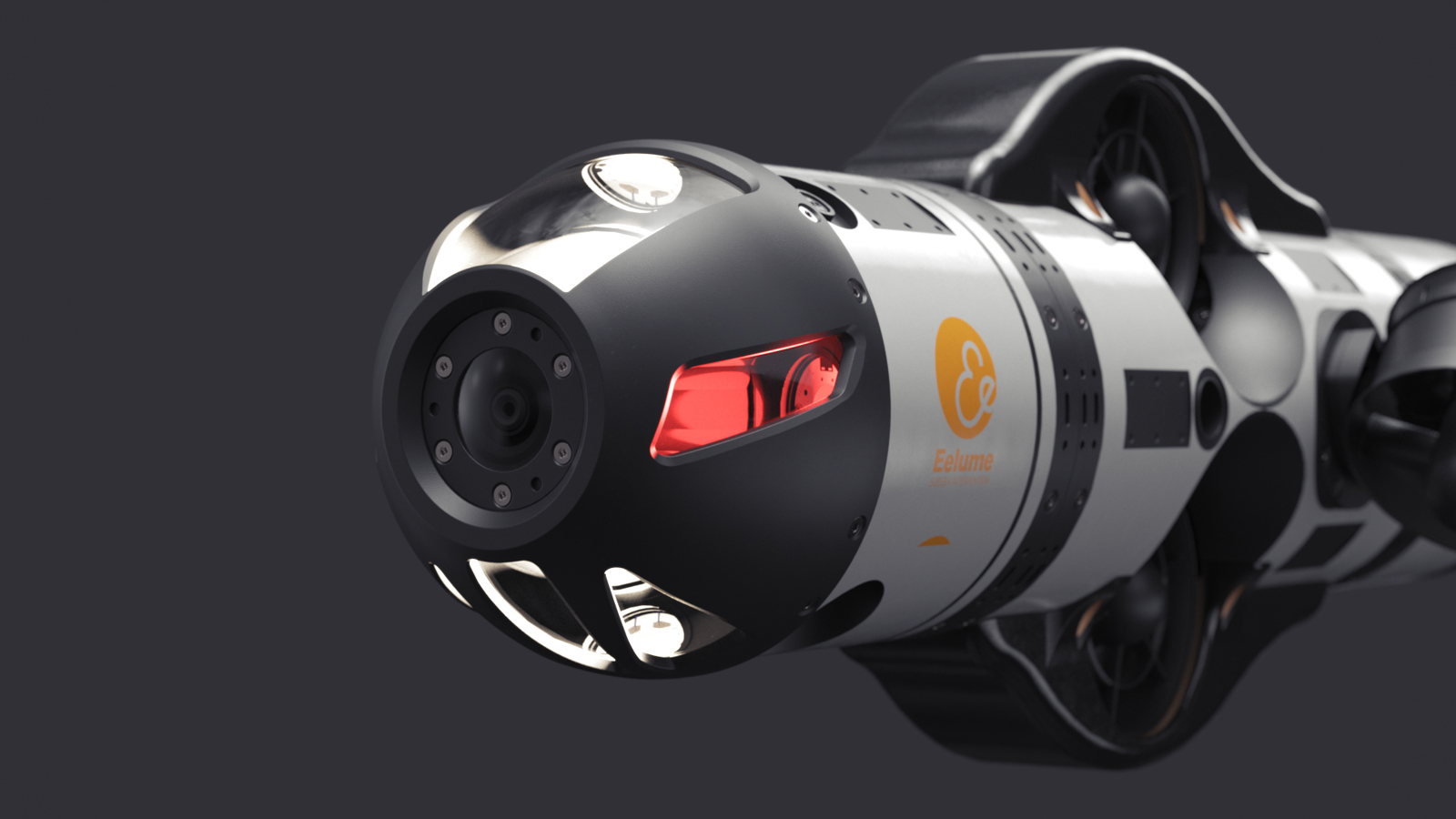
Just an test
